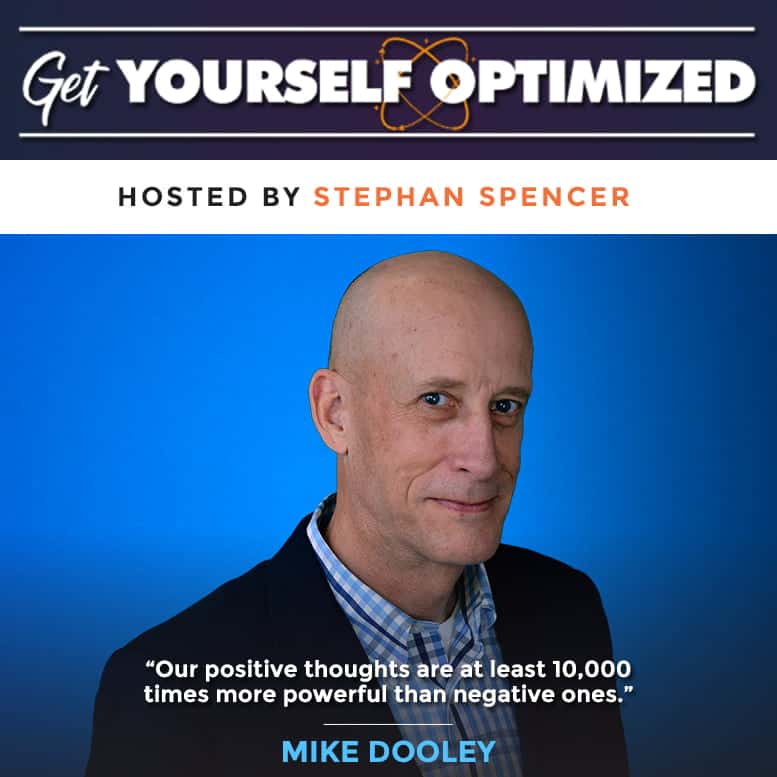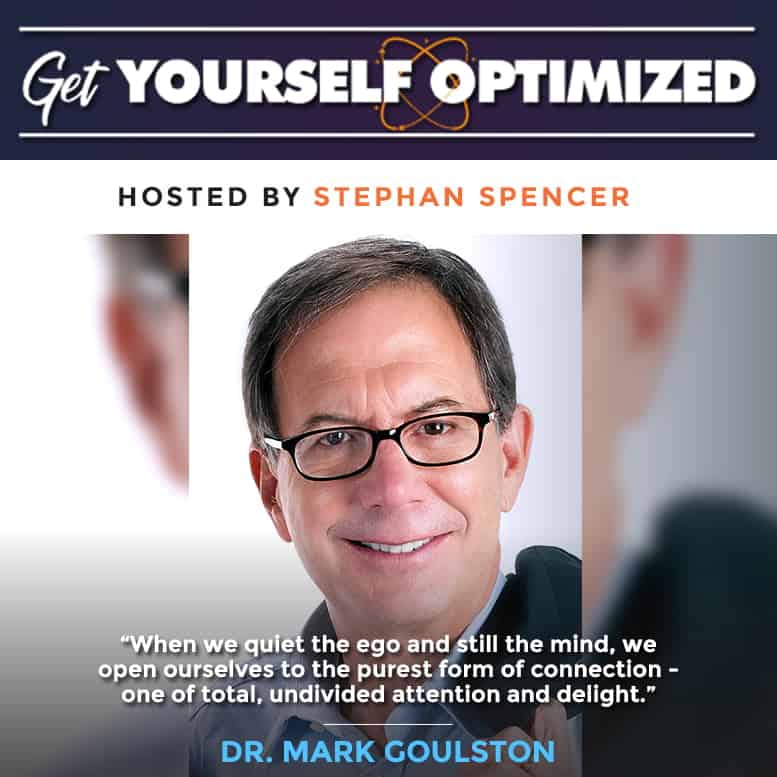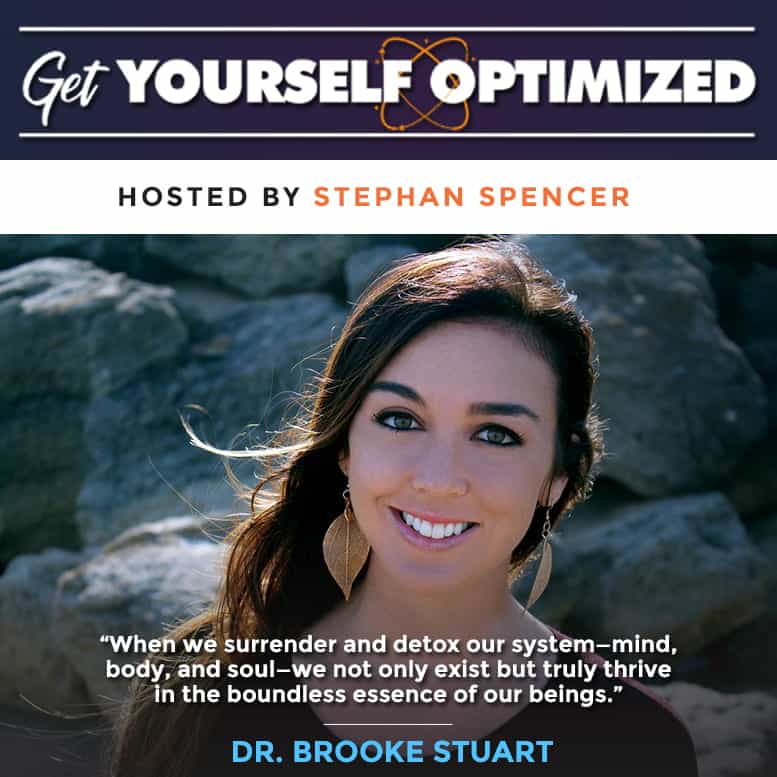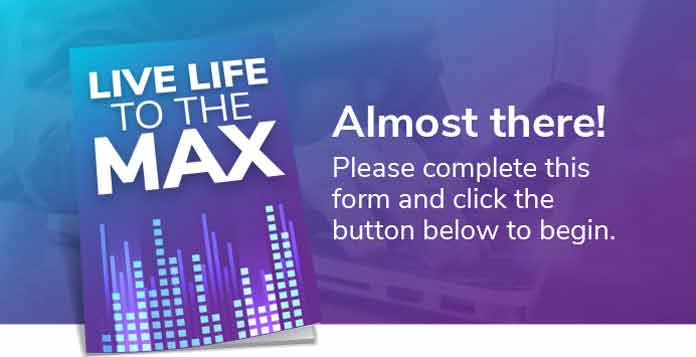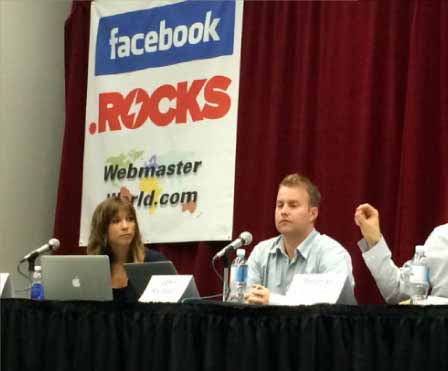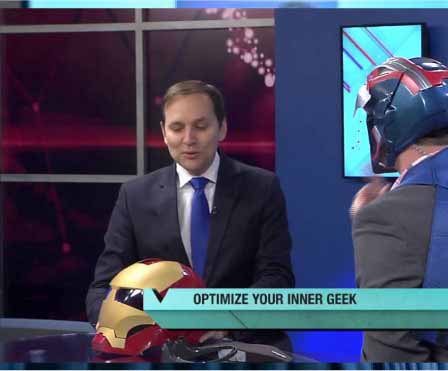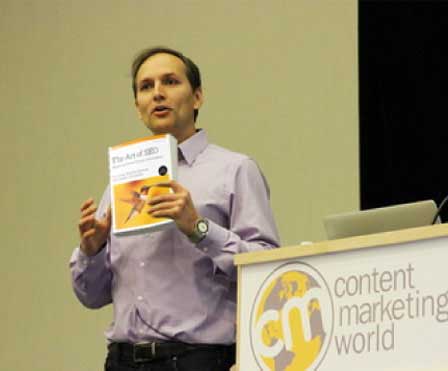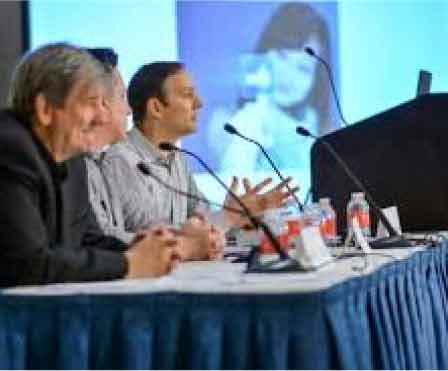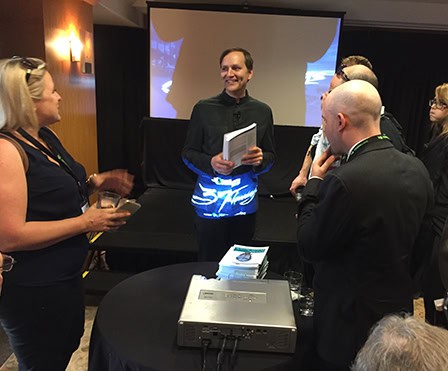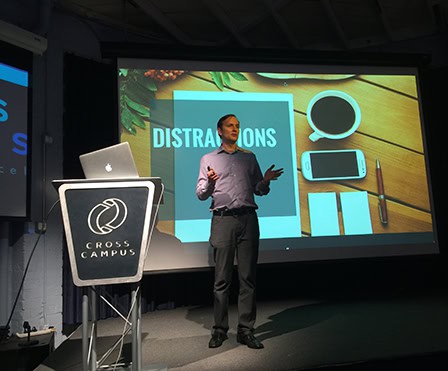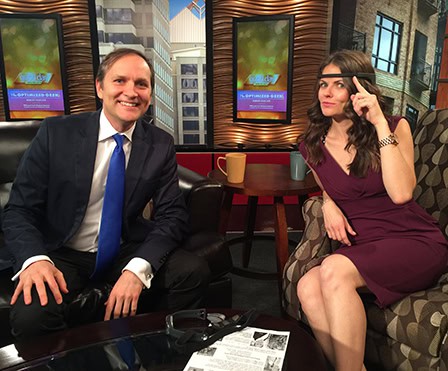Transcript
Vanessa, it’s great to have you on the show.
Thanks for having me.
Let’s start with this idea of charisma. What exactly is charisma and what is it composed of?
I was always fascinated by this idea because I kind of thought that you either had to be born with it or you didn’t have it. I thought, “Oh, those popular, charismatic people that will never be me,” and then I stumbled upon some research by Harvard Business School that looked at what makes someone charismatic. They found that charisma is measurable and learnable. It’s a combination of two traits: warmth and competence. Those people who have this sweet spot of being both of these. That was the key part of the research that I took away, you can’t just be warm, you can’t just be competent, you have to have both.
People who are high in warmth are friendly, relatable, sweet and open. But if they’re not also competent, they’re also interrupted. They’re not taken as seriously. They’re seen as friendly but not professional. On the other side, you have people who are highly competent, they’re seen as smart, powerful and dependable. But if they’re not also warm, they’re seen as cold, intimidating or hard to talk to. The really charismatic people are the sweet spot of being warm and open but also credible and powerful.
This kind of reminds me a bit of Sally Hogshead’s research into how people see you and that you have these two primary traits and then they intersect to identify what your archetype is. Do you have a model or some sort of framework to identify where people sit on the spectrum of warmth, competence, charisma, and other potential qualities?
We have something. It’s very simple and it’s called the Charisma Scale. You decide where you lean more towards. Typically, people lean more towards one side or the other. They either default more to competence or warmth. What’s interesting is I found that people tend to dial up or dial down based on their context or wit. Some people who are highly apathetic, they dial up whenever they’re rank with competent people and they dial warm whenever they’re with warm people.
Whereas others, when they’re in fear mode or socially anxious, they dial up one or the other. For example, someone who’s very socially anxious dials up in warmth, they’re going to be a giggler. They giggle all the time. They’re smiling and nodding like a bubblehead. Everything is, “Yes, yes, yes. Sure, sure, sure. Yes, yes, yes.” That’s too high on the warm side versus when they’re socially anxious who dial high in competence. They become a know-it-all. They spout facts and double check you. They tell what they think is an impressive story. They talk and try to bully you over with all their impressive knowledge and details.
The really charismatic people are the sweet spot of being warm and open but also credible and powerful. Click To TweetThey talk at you instead of to you or with you and then they come off as arrogant, right?
Arrogant or out of touch or cold. That’s when competence goes wrong. We develop the skill because your goal is to get right in the middle. We have an image of it if you want to see it at scienceofpeople.com/charisma. You kind of want to be in this balance or middle, you don’t want to go too far up the warmth side or too high up the competence side. Then we developed a quiz to test yourself on warmth or competence. It’s a very simple quiz that you could take where we ask you a set of two statements and you pick the one that sounds more like you. There are things like, “I am efficient or I am a team player,” which one sounds more like you. You have to pick one that was more like you. That way is a really good way to tell how you come across to others as well as yourself.
Very cool. Have you tested yourself on the Charisma Scale?
Yes. Not surprisingly, I’m obsessed with science, I typically dial-up on the competent side. When I get really nervous, I spout really weird, bizarre facts or quote all kinds of research studies. I like to give as many detailed, what I call helpful responses, as possible. The problem is that most people don’t necessarily want to hear a bunch of facts or a bunch of irrelevant advice, they want to be heard. That’s where I think we get into trouble. We often want to come across as impressive but that means that we think of all these impressive stories, quotes, and facts. But the best way to be impressive is to actually let other people impress you. That’s where we tend to get wrapped up and get into trouble with impressive arguments.
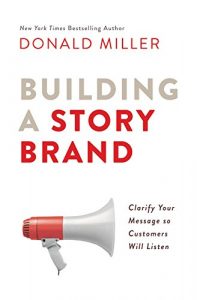
That reminds of a book I’m listening to right now called Building a StoryBrand by Donald Miller. He talks about how you need to be the guy and let your visitor, reader, listener or viewer be the hero instead of trying to be the hero and show how awesome you are and overwhelm them with testimonials and so forth.
I did Donald Miller’s podcast and he’s a great guy. We talked about how what trying to do in your marketing materials, with your website, with your brand building, is exactly as you mentioned, you want your audience to be the hero. Which means you also have to come across as both warm and inviting to your potential heroes. But you also have to demonstrate that you are a competent guru that can guide them. This also fits very well into that hero idea of Donald Miller story brand arc.
How would you recommend injecting some charisma into a pretty standard website of personal brand, speaker, author, coach, consultant, author kind of person?
Great question. What you want to do is you want to look at your brand assets. One of the things I talked a lot about in my course is, you have a nonverbal brand and you’re indicating who you are based on your different assets. What you want to do is pull out a big sheet of paper and write down each and every one of your brand assets. This could be everything from the obvious ones—so your website—but even breaking that down even further, it would be your headshot, your email signature, your LinkedIn profile header, your Twitter bio, all the way down to your logos, as many of those assets that you could possibly breakdown.
What you want to do is you want to count the number of warm elements versus competent elements in each of those assets. One exercise that we do is looking at a website, you might think, “Okay, so a warm asset is going to be words like, friendly, together, collaborate or teamwork.” Every time you mention one of those words in a heading or a header, that’s going to be a point for warm. Any time you mention a statistic, a fact, an expert’s interview or reference, that’s going to be a point for competence. Same with pictures, pictures of you speaking on stage are competence. Pictures of you shaking hands with someone or bonding with the teammate, those are warm pictures.
The goal is either having a balance of both or having an equal number of warm signals to competence signals or making it match your brand goals. Let’s say that you want to have a very highly competent brand like you are a science lab. Or if you want to have a warm website like you’re a therapist or a family counselor. If that’s the case, you want to aim a little higher on the side that matches you.
For example, you’ll notice if you go to our website—we are very specific not only with the colors we use but the words we use. Above the fold, if you go to our homepage, we have yellow, yellow is a warm color. Yellow, white and black are our brand colors that’s because white and black are typically more professional and sterile. And then we wanted to have really warm inviting colors, so those colors balance each other out.

We have a couple of images that balance between warmth and competence. We have pictures of me on stage. We also have pictures of me interacting with people as well as testimonials. Also, you’ll notice we have a couple more competent signals and warm ones because we want to make sure people know that we’re going after professionals. We’re very corporate-focused. We’re not about dating tips or social tips. You want to make sure that with all of your assets—your LinkedIn, your email signature, your website, your marketing brochures, your PDFs—you’re balancing it out or you’re matching your brand goals.
That’s very interesting. I’d probably skew very highly towards competence and less towards warmth on my website. I think the exception to that is on my about page, which is structured as a timeline. You’ll see me as a little kid, you’ll see me growing up and creating bulletin board systems from scratch, staying up all night all summer long coding as a kid, and doing all these stuff. Then as I file patents and get on magazine covers and so forth. There is competence for sure but the human element really kind of flows through that page. But I wouldn’t say that that flows through the whole website. I’d say I over-index on competence because of all the client logos and as-seen-on logos, you know the TV appearances, all the testimonials. I probably have 50 or 100 testimonials on my website so it’s a lot. I’m wondering if I’m driving my prospect away with that over competence.
It’s not always a bad thing. For example, we noticed that when we removed some of the warmth cues from our website, we got less casual questions, which as a brand is actually better for us. We wanted real credible inquiries. We do speaking events and few corporate clients, so we didn’t really want to show that, “Yeah, send us any questions you have.” We rather you go to our blog or YouTube channel for that. That’s not always a bad thing. If you have a lot of competence signals, you’re probably signaling to certain kinds of people to reach out, that might be a good thing. Now, if you’re like, “You know what, I want to turn any of those casual into leads,” you would definitely want to up your warmth signals because then you’re inviting those people to feel like, “Yeah, you know, I can ask them a very casual and easy question.”
And, “I can work with this guy.” He will be fun to work with as well as high ROI. Okay, cool. Where does persuasion fit into this because I think charisma and persuasion are kind of like two sides of the same coin.
It’s interesting because persuasion is a dirty word in my line of work. I say that because so many people have used their powers for evil and not good. You’ll notice that we only have one instance of persuasion on our entire website. We have over 500 articles; I think over 700 videos on our YouTube channel and we only have one persuasion. It took me a long time to write that article because I wanted to give a science-based guide to persuasion and to give people the power for good and not evil.
Persuasion is an interesting thing because it’s trying to get people to do your desired action. Ideally, in an ideal world, that desired action benefits both of you. For example, you want to work with the client because you can help them, so you get to work, and they benefit. In a way, charisma, yes, we are persuaded more often by people who are charismatic but persuasion itself is actually just motivating someone to do an action you want them to do. That’s a little bit of a different motivation.
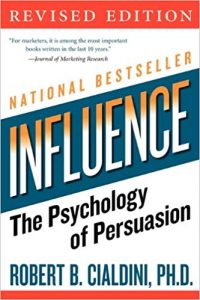
Got it. I’m curious what the author of Influence, Robert Cialdini, would say about your view on persuasion if he’d take issue with it. He has a book called Pre-suasion, so he’s big into persuasion for good, not for evil. He does warn in his books that, “Please don’t use this for evil because it can be and it shouldn’t be.
I think that one of the things that we try to teach a lot is that every interaction you have is an opportunity for good. My ideal dream world of persuasion is thinking, “How can I make sure that my words, actions, and work are setting people up for success?” That could be as simple as, if I had a cold call with a potential client, I’m not trying to persuade them to buy my business. I’m just trying to persuade them to have an open and honest conversation with me. If they enjoy, they don’t feel like I took from their day.
Those are both different kinds of persuasion, but the first one is very much making it so that even the cold call itself is an opportunity to have some kind of good. Ideally, you want them to sign up to your service or want to work with you, but even if just the interaction is a good thing, that means that you’re having a bigger impact. I have a quote, I have it taped on my desktop, “Anyone who comes into contact with me whether they hear about me, or they see me, or they think about me, experience benefit and happiness.” It’s taped on my computer. I read it out loud for every single one of my podcast and every single one of meetings. I did it for this podcast because I feel like, yes, I would like to persuade everyone listening to this podcast to give people hope, that is the end goal. But really, I’m just really excited that you’re listening. If I can persuade you to use any of the tips and have an inspiration in your life, that’s a win for me.
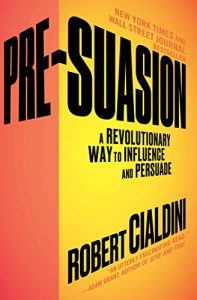
You’re revealing light in the world. That reminds of a Jay Abrahams concept of preeminence that, “If it’s better for your prospect to be directed to your competitor, then you should do that because that’s in their best interest, and your interest comes behind that.”
I love that. I never heard that before. That’s wonderful.
I interviewed Jay a while ago on his preeminence principles and Parthenon principle. It’s just an amazing interview, so listeners definitely check out that episode.
Now, let’s move on to this idea of how you project your body language, facial expression, hand gestures, and so forth. I know you did a lot of research on TED Talks and on what sort of components make for an effective TED speaker. You found a lot of really interesting things, I watched several of your talks talking about your research. Could you share a few of the highlights around the most important elements our listeners should know so that they could be a better speaker or have more charisma in interactions with others? The tone of voice, facial expressions, all that.
Yes, I am a TED Talk junkie. I love watching TED Talks. I sort of stumbled upon this interesting question where I was searching ted.com website for leadership—I love leadership talks. When I searched about leadership, one that you probably know, it’s by Simon Sinek and at that time it had over 40 million views. The other talk that came up right next to it was by Fields Wicker-Miurin and that talk had less than 40,000 at that time. I looked at these two talks, and I was just perplexed because both of these speakers had very similar talks. They had similar titles, both 18 minutes long and both were released on the website at the same month and year but one had gotten viral and one didn’t. It made me wonder, here are these two experts that were relatively unknown before their TED talk, but one of them totally exploded and one of them didn’t.
I know that Simon’s content is amazing but I was wondering if there is anything else to apply. We decided to analyze thousands of hours in TED Talks, looking for some kind of patterns based just on view counts. Looking at the most popular Ted talks or just the least popular TED talks, what was the major difference. We found that there were some really strikingly different patterns. The biggest one was that the most popular TED talkers used an average of 465 hand gestures in 18 minutes. Whereas the least TED talkers used an average of 272 gestures in 18 minutes. This was a huge difference
I went to the research and found two interesting things about hand gestures specifically. One is having our hand visible is definitely a warmth cue. It shows that we are open and inviting. We use our hands to acknowledge people. We give someone a wave or a handshake, they are our best way to acknowledge someone. They’re also our greatest threat. We punch someone, or push someone, or stab someone—they’re also our deadliest weapon. When we can see someone’s hand, they’re visible and active, it makes us feel that we can trust someone. It makes people feel we’re open and inviting.
That is one of the easiest takeaways for a speaker—that when you want to approach the stage you want to lead hand first. Don’t put your hand in your pocket, or behind a book or a computer, or behind a podium, or behind your back. The absolute worse. Having them visible is one of the easiest ways you could up your warmth scores. On the other side, this is where I think it gets more interesting, we also found out that hand gestures were critical for competence. That the best TED talkers kind of outline their concepts along with their words so when they say something is very big and they show you how big it is. They’re going to talk about three things, and they hold up three fingers. In this way—this is research done by Susan Goldin-Meadow—our gestures lighten our listener’s cognitive load; they also lighten our cognitive load.
If I ask you to tell me a story while sitting on your hands, you would have a harder time telling me that story and I will also have a harder time listening to those stories. Matching your hand gesture to your words is actually one of the best ways you can make it easier for your listeners to hear you. It helps lighten their load because they can see the words in front of them because your hands are underlining or outlining the concepts along with their words.
Every interaction you have is an opportunity for good. Click To TweetAnother thing I learned about hand gestures is it’s important to show your palms and not just the backs of your hands because that’s kind of showing you don’t have any weapons and our reptilian brain is looking for that.
Absolutely. It’s so funny because it’s a very universal gesture. I have an 11-month old daughter, she’s in the stage right now where whenever she sees something new she opened up the palm of her hand and she goes, “Oh!” It’s totally not learned, she just opened up her hand. If she’s open, she’s curious and in awe. When you have your palm showing, when you do that gesture, it also shows you’re open, curious and in awe which is a wonderful thing to show as a speaker.
This will convey that you’re approachable, trustworthy and don’t have any ulterior motives, and they’ll listen more openly to you. What about facial expressions, where do those come into the mix?
This is the nonverbal cue that hooked me. 10 or 11 years ago, I discovered this book by Dr. Paul Ekman. Dr. Paul Ekman is a pioneer in the research of facial expressions who completely debunked the myth that I believed my whole life. I believed that facial expressions were learned; that when babies were born, they see their mother or father’s face and they mimic or mirror their facial expressions and that’s how people learn facial expressions.
But Dr. Ekman discovered that our micro expressions are coded, they’re innate. That congenitally babies, babies who’ve been blind since birth, show the same facial expressions at the same time as the same children. That is a really important thing because it means that we can study facial expressions. If they’re innate, it means that cross cultures, genders, and races, our facial expressions and expressiveness are the same.
When I discovered that, I was instantly like, “Oh my gosh! This is the key to reading people.”. My entire life, I’ve not been able to understand people, I’ve not been able to read people. It was micro expressions that really gave me and opened the door for me to be able to truly understand people. The reason is when you could read micro expressions it’s like seeing the world in HD. Things that you never would’ve noticed before, it becomes suddenly obvious and apparent. It also adds another critical aspect to listening, so in every people’s skills book from the dawn of time, from how to win friends and influence people, to emotional intelligence, every author always talks about listening, the art of listening.
I think that true listening is when you’re both hearing and seeing. Yes, it’s hearing the words someone uses, it’s hearing the tone of voice they used, but it’s also seeing the expressions they used along with their words. That is true master level listening when you know how to recognize the seven micro expressions, you’re able to see if someone is congruent with their words. When they say they’re okay and they’re actually showing anger? When they say they’re happy and they show you a real happiness expression or fake happiness expression? When someone talks on the new project or working with you, do they show a secret flash of contempt? That is truly master level listening because you’re seeing as well as hearing.

But it’s kind of a ninja technique that you have to master. It’s not just looking at somebody’s face and seeing that they are not using their eyes in their smile. Like you said that flash of contempt can go by so quickly if you aren’t just on it and watching for it, you’ll miss it and then you won’t know that they really just hate your guts at that moment.
You’re absolutely right. It’s memorizing seven micro-expressions and then being able to spot them in action. I always teach reading micro-expressions. A big part of our workshops is the three-step process. One is just memorizing what the expressions are, that’s the easiest one. Second is being able to spot them in action, it happens very quickly. Once you know how to look for it, pretty easy to look for them. For example, the easiest way to spot it is the upper white of someone’s eyes, those were the easiest to spot. For anger, you’re looking for two vertical lines between eyebrows, those are also pretty easy to spot. The third step is responding correctly. If you see contempt on a prospect’s face, what do you do? Do you call them out on it? Do you respond? Do you defend yourself?
Let’s get defensive, that’s always the best way, right?
That’s the best thing to do for sales. The third thing is that, with each of the seven, how do you respond appropriately.
How do you respond appropriately to anger or contempt in a sales conversation?
Anger and contempt are two very different emotions.
Let’s start with contempt because that one I think would be very problematic for many of our listeners, and myself included, you take it personally. I mean to anger you could say, “Oh, that person had probably a bad day.” But if they show contempt towards you, it’s like, “What did I do? Who do you think you are?” You just get all defensive.
Yes, contempt is a really interesting expression. I can kind of describe it for you is if you just do a one-sided mouth raise or a smirk, that’s contempt. It’s the simplest of all the micro-expressions. It’s just that one-sided mouth raised. It’s the most asymmetrical of the facial expressions.
True listening is when you’re both hearing and seeing. Click To TweetWhat’s interesting is we did one of the world’s largest body language experiments where we had over 25,000 people take our body language quiz, and we asked them to diagnose each of the micro-expressions. Contempt is the one that people often get wrong of all the micro expressions even though it’s the simplest. Most people think that it’s boredom, that one-sided mouth raise, that’s the guess that most people guessed for that one. But boredom and contempt are two very opposite emotions. Contempt is scorn, disdain, and hatred. I’ll point to some other research before I talk about how to deal with it, which just shows you how powerful it is. Dr. John Gottman is a marriage and family counselor and researcher in Seattle.
I love him. I’ve been to his workshops. He’s great.
They’re the best. You probably know the study. He followed married couples for 30 years looking at patterns in their marriages. He wanted to know why some couples get divorced, and if you could predict it. He found that the biggest indicator of couples getting a divorce was if in their initial intake interview one of them showed contempt towards the other. Basically, contempt is one of the few emotions that doesn’t go away. Once you feel contemptuous of someone, it has to be addressed. The single most important thing, the way that you deal with it is, you want to make sure that you are an ally against it versus an enemy of it.
What I mean by that is, hopefully, you can address something that someone feels contemptuous of and get rid of it. Maybe someone had a misconception about pricing or they had a misconception about a package, and you could address it and say, “Oh no, it’s not like that at all, let me explain it.” That’s the best thing you could do to absolutely eradicate what was making them contemptuous in the first place.
But let’s say that you can’t. Let’s say that there’s a timeline that you just can’t get around, or the pricing is the pricing. The one thing you can do is you can become an ally against it. You can say, “I know that this timeline is not as fast as you want, but I’m going to be with you every step of the way. In fact, I’m going to make sure that we tighten up as much as we possibly can, so I can get this to you faster than any of our competitors because I am just as frustrated as you on this timeline.” That way, you actually used contempt as a bonding opportunity where someone is like, “Wow, they do know my pain. They got exactly what’s holding me up, and now I’m going to have who’s an ally with me against it.”

I would say that many listeners or at least some would say, “That sounds a lot like persuasion.”
I think it is. I think it absolutely is. As I mentioned at the beginning of the interview, my definition of persuasion is getting someone to hopefully, act in a way that benefits you both. If it benefits your client to have a sort of timeline, and have an ally, and it benefits you to make your client happy, that’s the best of both worlds.
Let’s say that you’re very good at spotting the micro-expressions, you’ve memorized them, you’ve learned some responding techniques, and now you’re on the lookout to up-level your body language ninja techniques, and you want to know things like what does it mean when somebody touches their face a lot, or they tug at their ear, or their rubbing their hands on their legs. Is there this kind of definitive bible or guide to all the different kinds of body language expressions and what they mean and how to interpret them?
There have been books that have come out on like body language bible kind of thing. The one that everyone always mentions, “If you look up to the left, it means you’re lying. If you look up to the right, it means you’re telling the truth.” Those are really problematic. The reason for that is because, whenever I teach body language, we try to teach that there is always context, culture, and clusters. This is exactly what the research is about body language.
When we’re in different contexts, that could change the meaning of one cue. For example, let’s say, it has been proven that statistically speaking when someone is lying, they’re more likely to touch their nose. In fact, Bill Clinton is a perfect example of this during his testimony in his Monica Lewinsky trial. During the questions about teenage drug use, he touched his nose I think 17 or 18 times and during other questions, he touched his nose once or twice. This is because they found that when you lie, the tissue in your nose begins to swell. I think this is the basis of the Pinocchio legend that the illustrator or the writer of that fable could feel the itching in his nose. That time you lied, by the way, see if you couldn’t feel the actual itching at the end of your nose, you often can. That comes from some truth that when you touch your nose someone is lying.
The context of that would change if you’re sitting outside at peak summer. I live in Portland, Oregon, there are pollens flying everywhere and someone’s touching their nose a lot that could be allergies. It could be a lie but it also could be allergies. So be very careful with those standalone cues. Statistically speaking, some of them are pretty accurate. Yes, if you’re interrogating someone, all of a sudden it begins touching their nose around one question, that would be something I would take note of but you also want to look for a cluster. That’s one of the other important Cs.
When you’re looking at body language, you always want to look at buckets, I call them micro positives or micro negatives. Micro positive is all the cues that typically show interest, engagement, curiosity, and happiness, they’re all the positive cues. Versus the micro negative bucket, which is things that show disinterest, boredom, anxiety, stress, guilt, and shame. If you have to, try to find three different cues that also underline or speak to that idea.
If you’re talking to someone and they lean back, crossed their arms and rolled their eyes—those are three micro negatives in a row. It’s probably not looking so good for you, you probably want to build some more rapport. Whereas you tell someone about a feature of your service or product, and they lean in, raise their eyebrows and use a more authoritative voice tone, that would be a really positive sign that that’s their favorite feature, that point you should double down on. It’s what I like to think of it is looking at those buckets.
The best way to be impressive is to actually let other people impress you. Click To TweetThere are times when you may be want to build rapport. Maybe there are times when you want to break it, like do a pattern interrupt where you kind of shake things up and challenge them, and get them to maybe have a breakthrough or some sort of insight that they wouldn’t have had if you just helped them to stay comfortable.
I think a pattern interrupting, only with micro positives. I actually never use micro negatives to pattern interrupt. When you’re talking about pattern interrupt, you’re talking about trying to—I call this being the red apple. In one of my courses, I share a story. I use to be a camp counselor when I was a teenager. Every day at snack time—I was in charge of snack time. I have to put up the snacks—I always dreaded it when there were apples because I knew that if there was an uneven number of apples there will be a problem.
The reason I discovered this is, one day I had taken all the red apples out of the bin to have only the green apples, the kids always fought over the colors, but I had accidentally left one red apple in. Sure enough, all the kids come pouring out of the playground, into the cafeteria, they run towards the apples, they grab the apples and they see the one red apple and then there is a huge fight. “Who gets the red apple?” They’re arguing. I go over there and I asked them, “Do you like red apples more than green apples?” “No.” “Do you think red apples taste differently than green apples?” “No.” “So why do you want the red apple?” “Because it’s the only one.”
Pattern interruption really helps when you can be the red apple. It’s important that you want to stay as an apple and you want to keep it all positive. But you want to do something with some elements of surprise that makes you just a little bit different than the other things. What can you do a little bit different than everyone else? For example, people always ask me to pick my brand of coffee, that’s all green apples. Whereas just last week someone asked me, “Hey, do you want to go get tacos?” That was a very interesting pattern, it was the same motivation and ask but I love tacos. If you read my website, if you follow me on Instagram, you know I love some tacos. She was like, “You want to grab tacos? There’s this new taco place I saw to this side of town. I would love to take you there. My treat.” That got my attention. She was still an apple, very nice, very positive but it’s a little bit different.
I like that. How are you using that in your marketing and in your website for example?
Everything we do, we try to think about how we can be the red apple. For example, on our sidebar, if you go to our sidebar, you’ll see there are all the typical things you see like other apples, but we also have a do not click here button. That’s because it’s a button, and usually, everything you want someone do in a sidebar is to click here, but we say do not click here. You’d be shocked at how many people click the do not click here button, because it’s actually the button that we want people to click.
Our gestures lighten our listener’s cognitive load. Click To TweetI want to click on it right now as soon as you said it.
Exactly. We do it all the time. Those are like, how can I make little things that are just a little bit different than other things you see everywhere. The do not click here button is an example, typically, instead of asking people to follow me, I’ll just change the words slightly and say, “Come party with me on Instagram.” Little tiny things like that, doesn’t have to be some grandmaster change but those things really matter. When we have events, we don’t just give out name tags, we give out name tags with conversation starters on them. People put their name as well as the answer conversation starter. It’s still a name tag, it’s still with their name, but it has a little bit of an element that makes them look at it and pay attention and smile.
I’ve heard you used the term power language is this one way that you become the red apple?
Definitely, especially if no one else in your category is using that language. Now, if everyone else in your category using power language, you wouldn’t want to. Think about what we can visit, visit the charisma scale. In a self-help line of work, you see a lot of warmth, openness, and friendliness. Smile more, be yourself, and be authentic, and all those kinds of phrases. We took a very different act, we decided to go up on the competence side, which is the science-based. We call our website the Science of People, that’s a little bit of a different approach. We used numbers, we used hard skills for soft skills, we look at the hard side of people skills. That differentiates us a little bit from our competitors because we’re using different kinds of cues than they are.
An example of a power language, word, or sentence?
Actually, I just said it, we apply hard science to soft skills.
I know we’re out of time, where do we send folks who are listening, and want to learn more about all those great stuff that we’ve talked about, body language, power language, and the different kinds of aspects of micro-expressions, and all that.
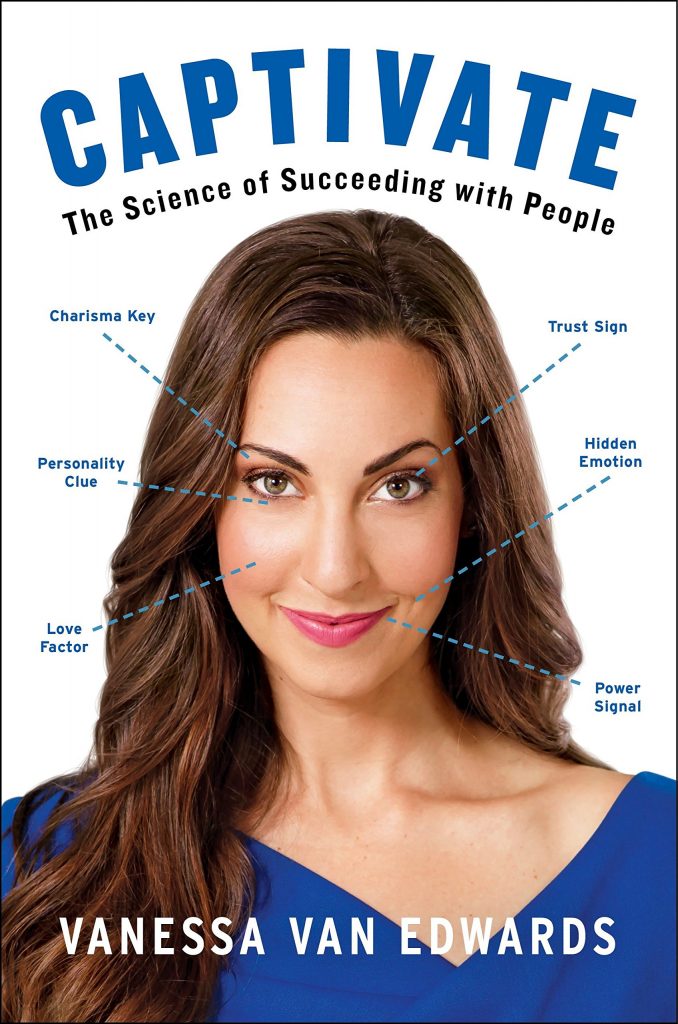
First of all, I’m grateful for everyone who’s listening. You’re welcome to check out all of our articles and we have hundreds of videos at scienceofpeople.com. If you want to test your charisma, you’re welcome to go to scienceofpeople.com/charisma. If you want to learn all the different micro expressions, I have a whole chapter of it on my book Captivate which is available wherever books are sold. I read the audible book; I do all kinds of funny voices on there for you as well. If you really want to check out some of the advanced tips, we also have a product called People School which launches about four times a year.
Awesome. Thank you so much, Vanessa, for sharing your wisdom and all the research that you’ve done. It’s been a ton of research that you’ve put into this, you can tell, it’s a passion for you and I appreciate it. Thank you for being on the show, thank you, listeners. Now, get out there and do something with this wonderful information that you’ve learned today. This is your host, Stephan Spencer, signing off.
Important Links
- Vanessa Van Edwards
- Facebook – Vanessa Van Edwards
- Twitter – Vanessa Van Edwards
- Instagram – Vanessa Van Edwards
- LinkedIn – Vanessa Van Edwards
- YouTube – Vanessa Van Edwards
- scienceofpeople.com/charisma
- scienceofpeople.com/blog
- People School
- Captivate: The Science of Succeeding with People
- Building a StoryBrand
- Influence
- Pre-suasion
- Jay Abrahams – previous episode
- Sally Hogshead – previous episode
- Donald Miller
- Robert Cialdini
- Jay Abrahams
- Advance Strategy of Preeminence – Youtube Video
- The Strategy of Preeminence – PDF
- Susan Goldin-Meadow
- Dr. Paul Ekman
- Dr. John Gottman
- Bill Clinton
- Monica Lewinsky
- How great leaders inspire action by Simon Sinek – TED Talk
- Learning from leadership’s missing manual by Fields Wicker-Miurin – TED Talk
- Pinocchio
Checklist of Actionable Takeaways










 About Vanessa Van Edwards
About Vanessa Van Edwards
Vanessa is Lead Investigator at Science of People. She is the bestselling author of Captivate: The Science of Succeeding with People. Her book has been translated into 15 different languages and more than 20 million people watch her on YouTube.
Vanessa’s shares tangible skills to improve interpersonal communication and leadership, including her insights on how people work. She’s developed a science-based framework for understanding different personalities to improve our EQ and help us communicate with colleagues, clients, and customers.
She works with entrepreneurs, growing businesses, and trillion-dollar companies; and has been featured on CNN, BBC, CBS, Fast Company, Inc., Entrepreneur Magazine, USA Today, The Today Show and many more.
LOVED THIS EPISODE
Please consider leaving me a review with Apple, Google or Spotify! It'll help folks discover this show and hopefully we can change more lives!
Rate and Review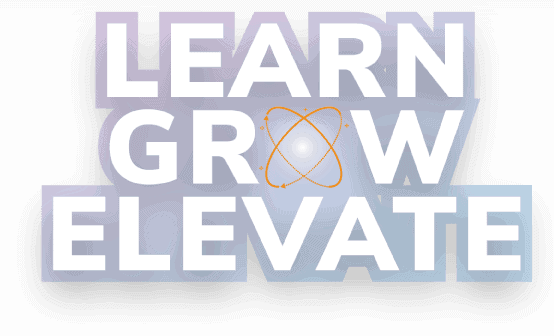








 About Vanessa Van Edwards
About Vanessa Van Edwards